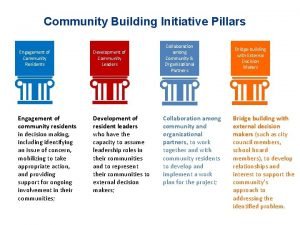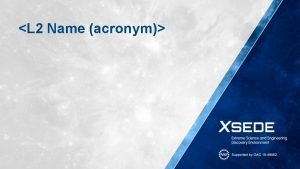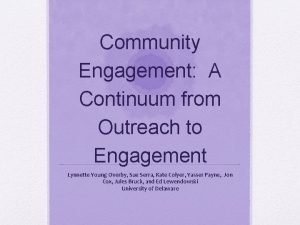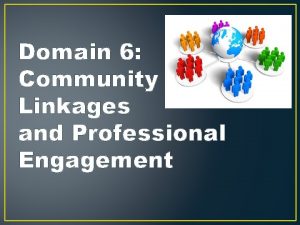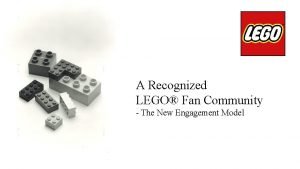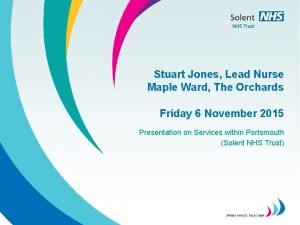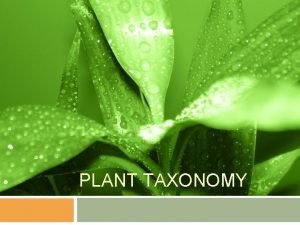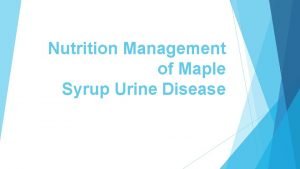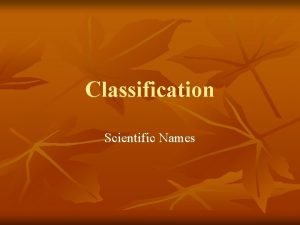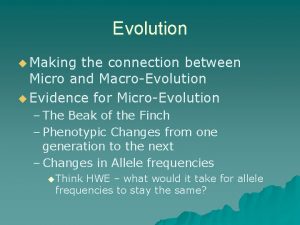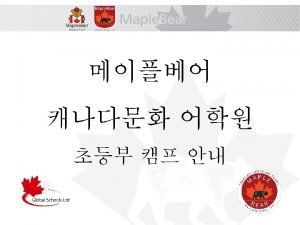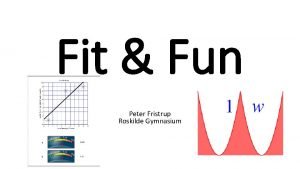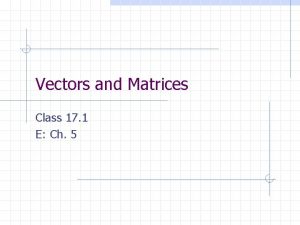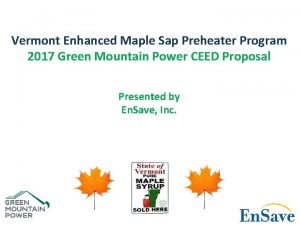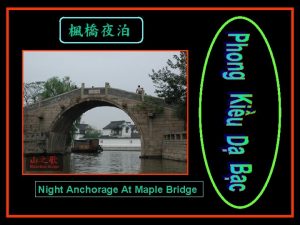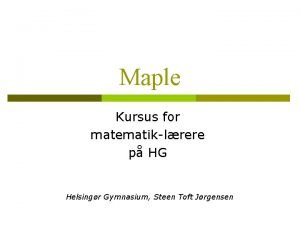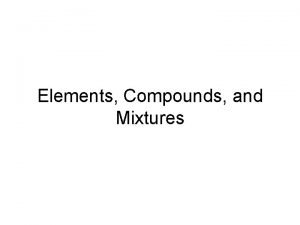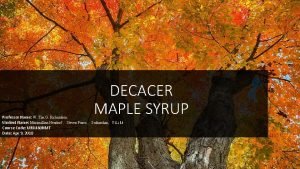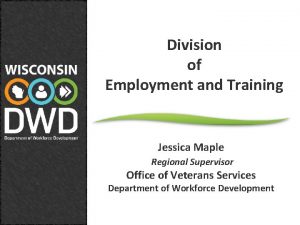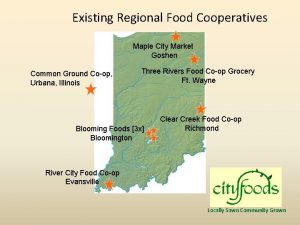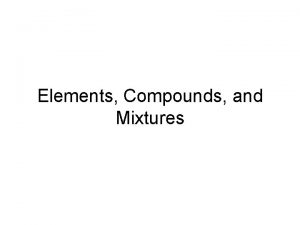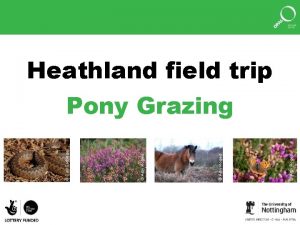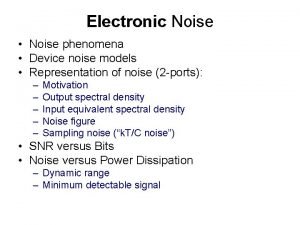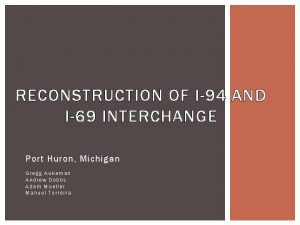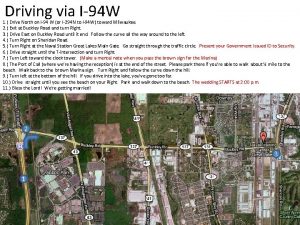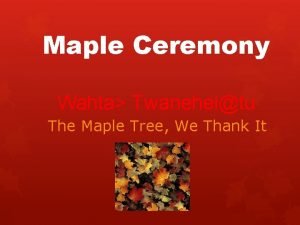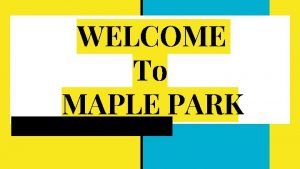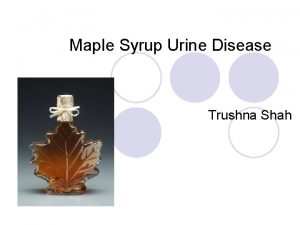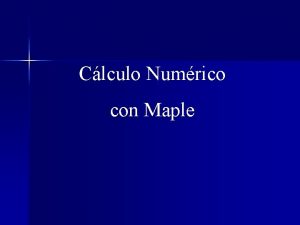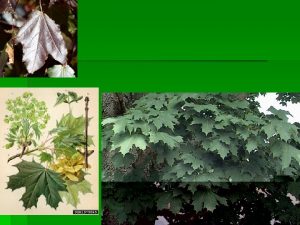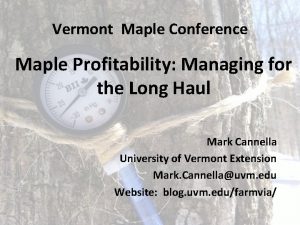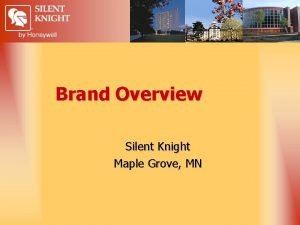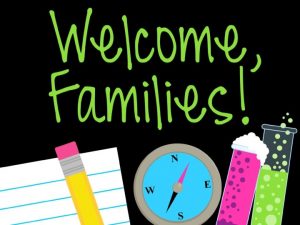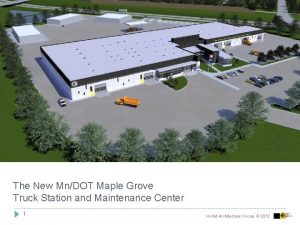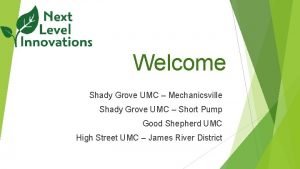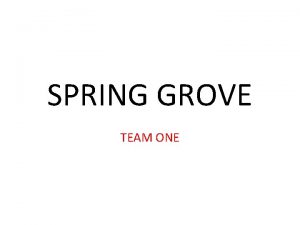I94 Maple Grove to Rogers Community Noise Engagement
























- Slides: 24

I-94 Maple Grove to Rogers Community Noise Engagement Meeting #1 Natalie Ries| Mn. DOT Metro Noise/Air Supervisor July 31, 2018, 6: 00 PM mndot. gov

Agenda • Community Noise Engagement Objectives • I-94 Project Noise Overview • Traffic Noise Basics • Video • Traffic Noise Analysis • Mn. DOT Noise Requirements • Noise Barrier Voting • Next Steps 2

Community Noise Engagement Objectives • Inform residents when Mn. DOT is conducting a noise analysis in their community • Provide greater understanding of Mn. DOT’s noise analysis process • Inform residents about the noise barrier voting process • Seek membership for smaller CNE Group • Provide two-way communication between community and the Mn. DOT project team • Review noise analysis methodology and results • Communicate noise analysis and project information to your neighborhood • Help with voter turnout for noise barrier voting Mn. DOT's Noise Analysis Webpage 3

I-94 Maple Grove to Rogers – Noise Analysis • Why is Mn. DOT doing a noise analysis for this project? • 23 CFR 772 and Minnesota Rules Chapter 7030 • Federally-funded Type I project: • (5) The addition of an auxiliary lane, except for when the auxiliary lane is a turn lane • (6) The addition or relocation of interchange lanes or ramps added to a quadrant to complete an existing partial interchange • Limits of Noise Analysis • If the project is determined to be a Type I project, then the entire project area is as defined in the environmental document is a Type I project Mn. DOT's Noise Analysis Webpage 4

Traffic Noise Basics Mn. DOT's Noise Analysis Webpage 5

Terminology • Sound: A vibration that causes pressure variations in air and water. Noise is unwanted sound. • Decibel (d. B): Sound pressure level is used to measure the intensity of sounds. • A-weighted decibel (d. BA): Gives a scale for noise levels as perceived by the human ear. • Leq(h): Average sound pressure level over one hour. Mn. DOT's Noise Analysis Webpage Source: Minnesota Pollution Control Agency 6

Log Scale • A doubling of energy, or doubling of identical sources, results in an increase of 3 d. BA 2000 vehicles per hour 4000 vehicles per hour is 3 d. B louder Mn. DOT's Noise Analysis Webpage 7

Noise Level Changes • 1 d. BA (increase or decrease) = noticeable • 3 d. BA (increase or decrease) = threshold of perception • 5 d. BA (increase or decrease) = clearly noticeable • 10 d. BA (increase or decrease) = perceived as twice as loud (or half as loud) Source: Minnesota Pollution Control Agency. 2008. A Guide to Noise Control in Minnesota Mn. DOT's Noise Analysis Webpage 8

Distance Attenuation • Beyond approximately 50 feet from a sound source such as a highway, doubling of distance will yield: • Sound level decrease by 3 d. BA over hard ground (pavement, water) • 50 feet = 70 d. BA • 100 feet = 67 d. BA • 200 feet = 64 d. BA • Sound level decrease by 4. 5 d. BA over soft ground (vegetation) • 50 feet = 70 d. BA • 100 feet = 65. 5 d. BA • 200 feet = 61. 0 d. BA Source: Minnesota Pollution Control Agency. 2008. A Guide to Noise Control in Minnesota Mn. DOT's Noise Analysis Webpage 9

How do Noise Barriers Work? • Block the direct path of sound waves from the highway (source) to adjacent residences (receptor) • Tall and long enough to block line of sight between the highway and residences • Will not block or eliminate all noise • Noise barrier effectiveness considerations: • Distance between the source and the receptors. Noise barriers are most effective for the first and second rows of residents (~300 -400 feet from barrier) • Topography • Intervening features such as buildings or earthen berms Source: Federal Highway Administration Mn. DOT's Noise Analysis Webpage 10

Video Mn. DOT - 2015 Noise Wall Master Video Mn. DOT's Noise Analysis Webpage 11

Traffic Noise Analysis I • Noise Monitoring • Document existing noise levels in the field at representative sites • Noise model validation (+/- 3 d. BA) Mn. DOT's Noise Analysis Webpage 12

Traffic Noise Analysis II • Noise Level Modeling • Characteristics of roadway (horizontal and vertical alignments) • Receptor sites (represent residences, businesses, trails, parks, etc. ) • • Outdoor place where frequent human use occurs • Typically within 500 feet of the project corridor • Noise Abatement Criteria is defined by land use Loudest Hour • Traffic volumes and speeds • Vehicle types (cars, medium trucks, heavy trucks, buses, motorcycles) • Topography (ground lines, buildings, existing noise barriers or berms) • Existing conditions, Future No-Build, and Build conditions (generally a 20 -year traffic projection) • Not modeled: • Weather conditions • Surface type Mn. DOT's Noise Analysis Webpage 13

Traffic Noise Analysis III Source: TNM 2. 5 Mn. DOT's Noise Analysis Webpage 14

Traffic Noise Analysis IV • Noise Mitigation Modeling • Consideration of noise mitigation measures for areas where noise level impacts are predicted (e. g. , noise barriers) • Model variety of lengths, heights, and locations as necessary • Determine noise insertion loss for each barrier (i. e. , noise level without barrier vs. noise level with barrier) • Decisions about where noise barriers are proposed are based on feasibility and reasonableness Mn. DOT's Noise Analysis Webpage 15

Mn. DOT Noise Requirements I • Provides guidance for how noise analyses should be completed for Mn. DOT projects and other Type I projects in Minnesota • Developed in conjunction with MPCA and FHWA • Updated in July 2017 • Defines Mn. DOT’s thresholds for feasibility and reasonableness of noise barriers Mn. DOT's Noise Analysis Webpage 16

Mn. DOT Noise Requirements II • How does Mn. DOT determine where noise barriers will be constructed? • Is loud enough? (Impact, Noise Abatement Criteria) • Can a barrier be engineered at this location that effectively blocks noise? (Feasibility) • Does a barrier provide noticeable levels of noise reduction? (Reasonableness – Noise Reduction Design Goal) • Does the barrier provide noticeable levels of noise reduction for enough people to justify the cost? (Reasonableness – Cost Effectiveness) • Do people want a noise barrier? (Noise Barrier Voting Process) Mn. DOT's Noise Analysis Webpage 17

Noise Abatement Criteria • Traffic Noise Impact • Noise levels are approaching or exceeding the NAC. • Approaching is defined as within 1 d. BA. • Typically looking at future Build noise levels • E. g. , 66 d. BA (Leq) for residential land uses • Substantial noise increase • 5 d. BA or more increase between existing noise level and future Build noise level Mn. DOT's Noise Analysis Webpage 18

Feasibility • Acoustic feasibility - 5 d. BA reduction at impacted receptors for them to be considered benefited) • Engineering feasibility is determined by physical and/or engineering constraints (i. e. , could a noise barrier feasibly be constructed on the site? ) • 20 foot maximum height for Mn. DOT noise barriers • Considerations: • Does Mn. DOT have the required right of way to construct the barrier? • Safety concerns such as sight distances and clear zones • Buried utilities or utility relocation needs • Impacts to drainage or drainage features within right of way • Soil types or wetland areas Mn. DOT's Noise Analysis Webpage 19

Reasonableness – Noise Reduction Design Goal • Noise Reduction Design Goal - A noise reduction of at least 7 d. BA must be achieved at a minimum of one benefited receptor for each proposed noise abatement measure Mn. DOT's Noise Analysis Webpage 20

Reasonableness – Cost Effectiveness • Cost effectiveness: • Does the barrier meet a cost effectiveness value of $78, 500 per benefited receptor • Benefited Receptor = receptor that experiences a 5 d. BA or greater level of noise reduction from the barrier • Based on barrier costs of $36/sq ft (~$3. 8 million per mile) • Consideration of other costs such as guard rail, rub rail, utility relocation, etc. shall be added to the baseline unit costs Mn. DOT's Noise Analysis Webpage 21

Reasonableness – Noise Barrier Voting • If a noise barrier meets the Mn. DOT the feasibility and reasonableness criteria, then the viewpoints of the benefited residents and owners need to be solicited through a voting process. • 30 day voting period, mailers and public meeting • Points system with weighted vote (1 st row vs. 2 nd row; owner vs. resident) • Aim to achieve 50% response rate based on points • Majority of points received determines outcome of barrier Mn. DOT's Noise Analysis Webpage 22

Next Steps • Volunteers for Community Noise Engagement Group? • CNE Group Meeting #2 – August/September 2018 • CNE Group Meeting #3 – October 2018 • Noise Barrier Voting – December 2018 (30 days) • Noise Barrier Voting Public Meeting – December 2018 • Noise Barrier Construction – with project in 2020 Mn. DOT's Noise Analysis Webpage 23

Thank you! Natalie Ries Natalie. Ries@state. mn. us 651 -234 -7681 Mn. DOT's Noise Analysis Webpage 24
 Companding quantization
Companding quantization Community building initiative
Community building initiative L2name
L2name Community engagement continuum
Community engagement continuum Domain 6. community linkages and professional engagement
Domain 6. community linkages and professional engagement Lego engagement
Lego engagement The orchards st james
The orchards st james Acer rubrum taxonomy
Acer rubrum taxonomy Maple syrup urine disease amino acid
Maple syrup urine disease amino acid Maple lane elementary school
Maple lane elementary school N scientific name
N scientific name Maple leaf and oak leaf homologous
Maple leaf and oak leaf homologous Maple bear songpa
Maple bear songpa Maple gym pakke
Maple gym pakke Cross product ti 89
Cross product ti 89 Sap preheater
Sap preheater Quạ đen maple
Quạ đen maple Maple kommandoer
Maple kommandoer Maple syrup urine disease treatment
Maple syrup urine disease treatment Is rice a heterogeneous mixture
Is rice a heterogeneous mixture Histogram maple
Histogram maple Decacer maple syrup
Decacer maple syrup Jessica maple
Jessica maple Food coop carbondale il
Food coop carbondale il Is maple syrup a homogeneous mixture
Is maple syrup a homogeneous mixture

